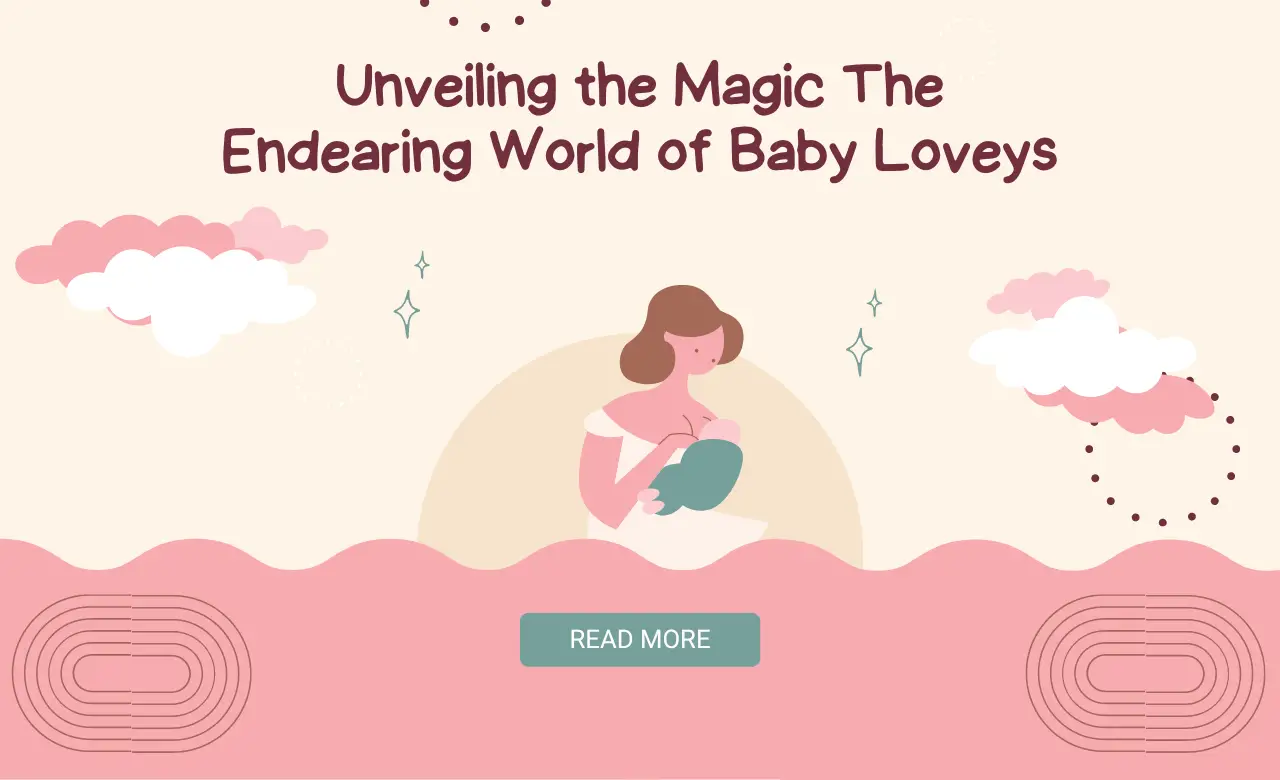Unveiling the Magic The Endearing World of Baby Loveys

In the heartwarming journey of parenting, few things are as cherished as the tiny, tender moments spent with a newborn. Amidst the sleepless nights and joyous giggles, parents often seek comfort solutions that not only nurture their little ones but also provide a sense of security. Enter the enchanting realm of “baby loveys,” those soft, cuddly companions that become an integral part of a baby’s world. In this exploration, we unravel the magic behind these adorable comfort objects and understand why they hold a special place in the hearts of both infants and parents alike.
Defining Baby Loveys: More Than Just a Toy
At first glance, a baby lovey may seem like a simple stuffed animal or soft blanket. However, to the discerning eye of parents, it is much more. Baby loveys, also known as security blankets or comfort objects, are often small, plush items that infants grow attached to for comfort and reassurance. These tiny companions become sources of solace, offering a sense of familiarity and security during moments of stress or uncertainty.
The Comfort Connection: Why Babies Love Loveys
The bond between a baby and their lovey goes beyond the realm of mere play. Infants are naturally drawn to soft textures and familiar scents, making a lovey a tangible source of comfort. These tiny companions serve as transitional objects, helping babies navigate the separation from their parents and providing a sense of continuity in the early stages of development. The act of cuddling a lovey becomes a soothing ritual, offering a touchpoint of reassurance in a world that is still new and overwhelming.
Sleep Time Sidekicks: Loveys in the Crib
One of the most common roles of baby loveys is as sleep companions. Parents often introduce a soft, huggable lovey into the crib to create a cozy and comforting sleep environment. The familiar scent and texture of the lovey provide a sense of security, helping babies ease into sleep more comfortably. Over time, the lovey becomes a consistent presence in the crib, forming an association with bedtime routines and creating a comforting sleep ritual.
Attachment and Security: The Psychological Impact
Child development experts highlight the importance of attachment in early infancy. Baby loveys play a crucial role in fostering secure attachments between babies and their caregivers. As babies form a bond with their lovey, they learn to self-soothe and regulate their emotions. This emotional self-regulation lays the foundation for healthy social and emotional development as the child grows. The lovey becomes a trusted companion, offering a safe haven during times of stress or anxiety.
Choosing the Perfect Lovey: A Personal Journey
Selecting the right baby lovey is a highly personal and often sentimental journey for parents. Some opt for soft blankets with attached plush animals, while others choose small stuffed animals or dolls. The choice may be influenced by factors such as texture, size, or even sentimental value. Many parents find joy in selecting a lovey that resonates with their baby’s emerging personality or matches the theme of the nursery, creating a meaningful connection between the child and their comfort companion.
The Versatility of Loveys: Beyond the Crib
While baby loveys are commonly associated with sleep time, their versatility extends to various aspects of a child’s day. Whether it’s a comforting presence during doctor visits, a companion during car rides, or a source of solace during teething, loveys prove to be reliable allies in a baby’s world. The small size and portability make them convenient additions to diaper bags, providing comfort on the go and ensuring that a familiar source of reassurance is always within reach.
Navigating Transitions: Loveys in Early Childhood
As babies grow into toddlers, the lovey often evolves into a cherished transitional object. It becomes a companion during times of change, such as starting daycare or facing new environments. The familiar lovey provides a sense of continuity and security, easing the challenges that come with transitions. Many parents find that the bond between their child and their lovey extends beyond infancy, becoming a comforting presence well into the early childhood years.
Caring for Loveys: Navigating the Wear and Tear
Given the close bond between a child and their lovey, wear and tear are inevitable. Many parents find themselves navigating the delicate balance of maintaining the integrity of the lovey while accommodating the inevitable signs of affection – be it a well-loved frayed edge or a faded hue. Some choose to purchase duplicates of the same lovey to have a backup ready, while others embrace the unique character that each sign of wear imparts to the cherished companion.
Letting Go: The Gradual Transition
As children grow, the time inevitably comes for them to transition away from their beloved lovey. This can be a bittersweet moment for both parents and children. The gradual process of letting go is a testament to the emotional growth and independence achieved. Some families choose to incorporate a symbolic ceremony or create a special keepsake to commemorate the transition, ensuring that the lovey’s role in the child’s life is celebrated rather than abruptly ended.
Conclusion: The Enduring Magic of Baby Loveys
In the enchanting world of parenting, Milk Snob baby loveys stand as small but mighty companions, weaving a thread of comfort, security, and attachment. From sleep time snuggles to daytime adventures, these soft, huggable objects play a vital role in a baby’s emotional development. As parents witness the bond between their little ones and their loveys, they are reminded of the enduring magic that lies in the simplest and most cherished moments of childhood.

